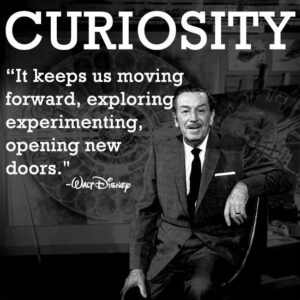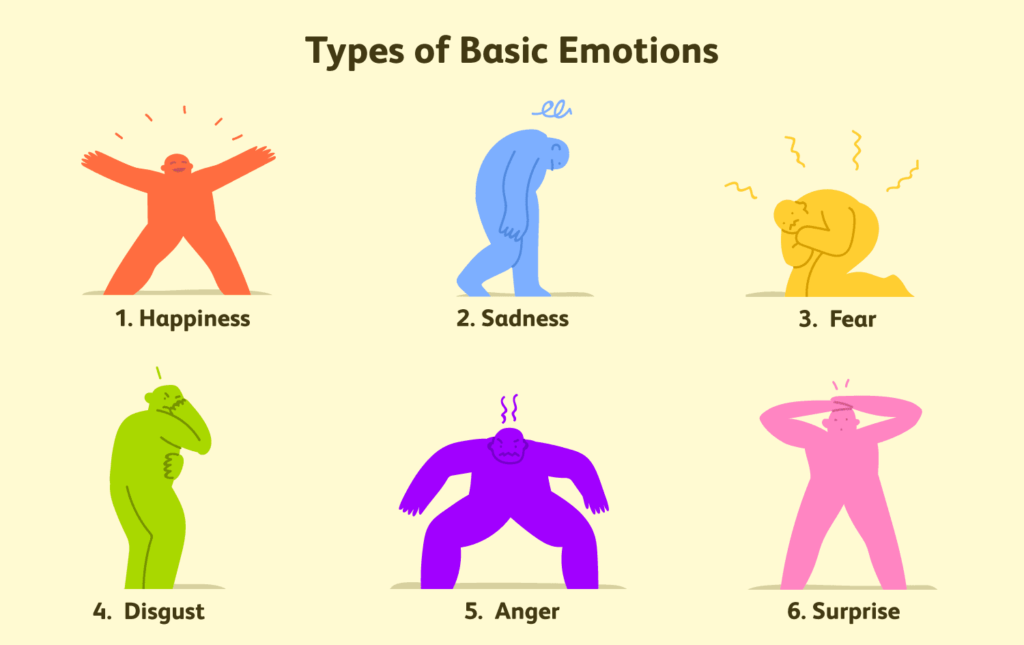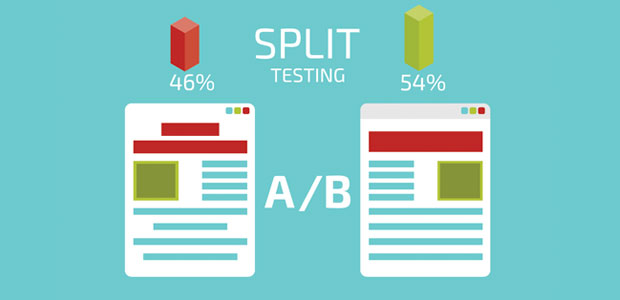Online ads have one purpose and one purpose only – to get you to stop what you’re doing and click. That is the whole purpose of an online ad. Yes, that may sound very simplistic, but that’s the bare bones of it.
Online ads are designed to make you stop what you are doing and make you curious enough to click or follow through on the call-to-action.
If you keep that in mind when you create an online advertising campaign, you’ll view your efforts and measure success with the right metrics – the king of which is clicks that lead to a conversion action.
I remember when I first started a job as a Google Ads account manager. I thought that it would be a good idea to create some ads for “brand awareness” purposes. My boss quickly shot that idea down and told me that online pay-per-click ads are not about creating brand awareness or anything else. Their sole purpose is to generate clicks and drive traffic to your website or offer.
Of course, there are other types of ads that you can use to create brand awareness and everything else, but if you want to make sales then your ads should make people click and act on your call-to-action.
So how do you create effective online ads that grab people’s attention and make them click?
6 secrets to creating effective online ads:
1. Not all clicks are equal – you only want the right people to click on your ads
Getting loads of clicks is only a good thing if the right people are clicking on your ads.
If you have hundreds of people clicking you might feel like your ad is successful – until you see that those clicks are not turning into sales. If you’re getting lots of clicks and visitors to your website, sales page, or offer and these are not turning into conversions then it’s likely that many of those people are not in your target market.
This is why getting your targeting right is so important. You don’t want people who are not in your target market to see or click your ad – this can end up eating up your whole advertising budget if you’re not careful, especially with pay-per-click advertising. Make sure you understand your target market. What platforms do they use? Where do they congregate online? What images or words will connect with them?
Make use of as much data as you can. Knowing essential demographic information, using custom intent audiences, and knowing when your target audience is likely to be online, what device they prefer to use, what browser, etc. are all things that will ensure your ads are optimised to be displayed to the right people at the right time.
2. Curiosity makes people click
 Curiosity sells. It also causes people to click!
Curiosity sells. It also causes people to click!
If you can arouse a sense of curiosity with your ads you will have a significantly greater chance of making people want to click.
Curiosity is used a lot nowadays in online advertising. I’m pretty sure you’ve seen those ads which have headlines such as: “This box lay unopened in her attic for years. When she finally decided to open it she was shocked to discover what was hidden inside.”
If you read that the chances are it aroused your curiosity. What is in the box? What did she find? This curiosity is what drives so many people to click.
These sorts of ads may seem like clickbait (and many of them are), but the reason you see them so often is that they work! People are bombarded with ads nowadays so getting their attention is becoming harder and harder. The one thing that will guarantee you their attention and increase the chances of getting a click is curiosity.
If your ad makes someone ask “What it is?” or “How do they do that?” then you have successfully aroused their curiosity enough to make them want to click your ad.
You can arouse curiosity with an interesting image or an interesting headline. Having a good headline is important as this is normally the first thing that people see, or pay attention to, which brings us to our next tip. (For a more detailed list of headline tips you can check out the post I wrote that will help you to learn how to write catchy headlines)
3. Grab people’s attention by asking them a question
The easiest way to grab someone’s attention is to ask them a question. A question makes someone stop, pay attention, and even answer the question to themselves in their head. Questions are a great attention grabber and make for very effective headlines.
Some examples of effective questions include:
- Would you like to…………?
- Have you ever wanted to……………?
- Are you fed up of……………?
These questions will enable you to grab the attention of people in your target market, whilst eliminating those who you do not wish to target. The key to using questions is to ask a question that is relevant to your product, service, or offer, and to which your audience will answer “yes”.
Example: Imagine you’re in the weight-loss industry and are selling a new home-based workout course.
- Are you fed up with trying every new diet on the market only to find out they don’t work?
- Would you like to lose weight, get in shape, and feel great without having to pay for an expensive gym membership?
- Have you ever wanted to know the secret to burn stubborn body fat and building lean muscle whilst still eating the foods you love?
If someone answers “yes” to these questions it means that you will have successfully grabbed their attention. They will be curious to know what product/service/secret /answer behind these questions is, so they will click to find out.
4. Emotion is the key
The questions above succeed in grabbing your prospect’s attention because of one thing – emotion.
When you ask the right question to the right person, it should elicit an emotional response. If you ask the right question to the wrong person it won’t elicit any response, because it will be completely irrelevant to them.

Let’s go back to our weight-loss example above.
If you are someone who has struggled with your weight, tried and failed so many diets, and wants to get in shape but can’t afford to pay for expensive gym memberships – then those questions we asked will resonate with you on an emotional level.
Just by reading the questions you will relate them to your own struggles. They make you think about the efforts you put in to get in shape and the failures and setbacks you have experienced so far. They will cause you to think about how unhappy you are in your current situation, and how badly you want to get the results that have so far eluded you.
It is the power of emotion that grabs their attention and holds it long enough for them to read your copy, which arouses curiosity and makes them click.
“People buy on emotion and justify with logic”
If you can trigger the right emotional response it’s almost like having access to a “buy” button in your prospect’s mind.
5. Make your call-to-action clear and easy to follow
Never assume that your customer will know what to do when they see your ad. I’ve seen so many advertising campaigns fail because of this one thing.
Remember – the purpose of your ad is to grab your prospect’s attention and make them click or follow through on your call-to-action. Once you have their attention and have aroused their curiosity you have to make it easy and clear for them to know what to do next.
Your audience doesn’t want to work hard in order to figure out what next steps they are supposed to take – you have to make it crystal clear for them.
Important Note: If you mislead your prospect and you send them to a landing page that they weren’t expecting they will normally click off straight away and you will have lost them forever. If your bounce rate is high then it normally means that what you served up after the ad is not what your prospect expected to see when they clicked.
You can avoid this by making your call-to-action clear enough so that your prospect knows exactly what to expect when they click.
Examples:
- If you want them to complete a form then your call-to-action should be something like: “Click here to sign-up”
- If you want them to watch a quick intro video your call-to-action should be something like “Click here to access your free video”
- If you want them to download a report then your CTA should be something like: “Click here to grab your free report”
Make it clear what they should do, and also make clear what they can expect to see/do/hear when they click.
6. ABT – Always Be Testing
Always be testing – this should be the motto of every online advertiser. You need to continuously test and re-test your ads. Split-testing or A/B testing your ads is a great way to find out which one is performing better.

But once you have found an ad that works, don’t rest on your laurels! You need to constantly be creating and testing new ad copy to replace the winning one when it stops performing.
Even the most successful ads will start to slow in their performance after a while. People develop ad fatigue (this is where your audience becomes overly familiar with your ad) when they see the same ad over and over again, so it’s important to keep things fresh with new ad copy in order to keep attracting clicks.
As a Google Ads account manager, I tested hundreds of ads. When I found a winning ad I would create another to test against it and see if I could beat it. And so on and so on. You can read my post on some of the key things I learned from testing thousands of Google Ads.
You’ll be amazed at how much you can improve the performance of an ad with just a slight tweak here and there. Digital marketing tools and platforms have made online advertising super easy. We can now create ad tests and get fast and accurate results to know what works and what doesn’t. Compare that to traditional forms of advertising such as print, radio, or television. Campaigns on these offline channels have always been hard to measure, but online advertising is super fast and accurate, with no guesswork involved.
Different niches and markets will respond differently to different ad types, images, and ad copy. Create different ads and test them against each other, and let your data tell you what works and what doesn’t.
Summary
So there you have 6 secrets to creating effective online ads.
If you want to save yourself from wasting money on unwanted clicks then first make sure you have your targeting right – target the right people and avoid the wrong people!
Curiosity is the key to making someone click. If you can arouse a sense of curiosity with your ad then you have a great chance of making someone click.
Asking questions is a great way to grab attention and create curiosity. Make sure you are asking the right questions and that they are relevant to your niche and target audience.
Your questions should elicit a “yes” answer. If you understand your target market and ask the right questions, you will trigger an emotional response.
Emotion is a powerful motivator and will cause your prospects to take action on your call-to-action, which should be clear and simple to follow.
ABT – always be testing! Even the best ads will stop performing eventually, so don’t get caught out – make sure you are regularly testing new ideas and ad copy to find new winning ads. Test new headlines, new images, new questions, new fonts, etc. but remember to only test one variable at a time.
There are other ad writing tips and tricks you can use to boost your ad performance. Check out my post on how you can supercharge the effectiveness of your ads by appealing to the senses.
I hope this guide has been helpful.
For more tips on how to write effective ads check out our 5-part blog series which covers the 5 fundamental purposes of an advert: Ad Fundamental #1:Getting Attention!




